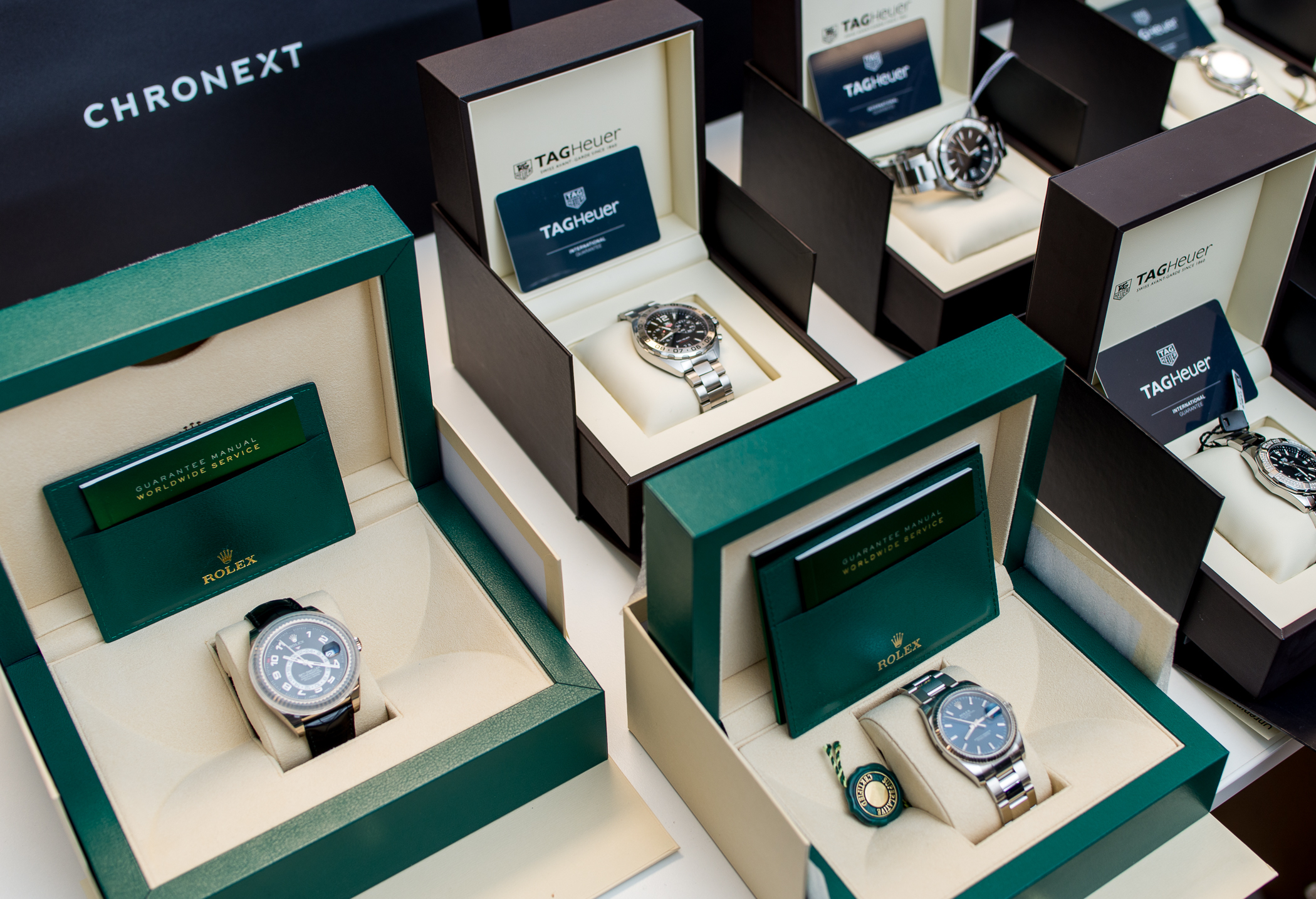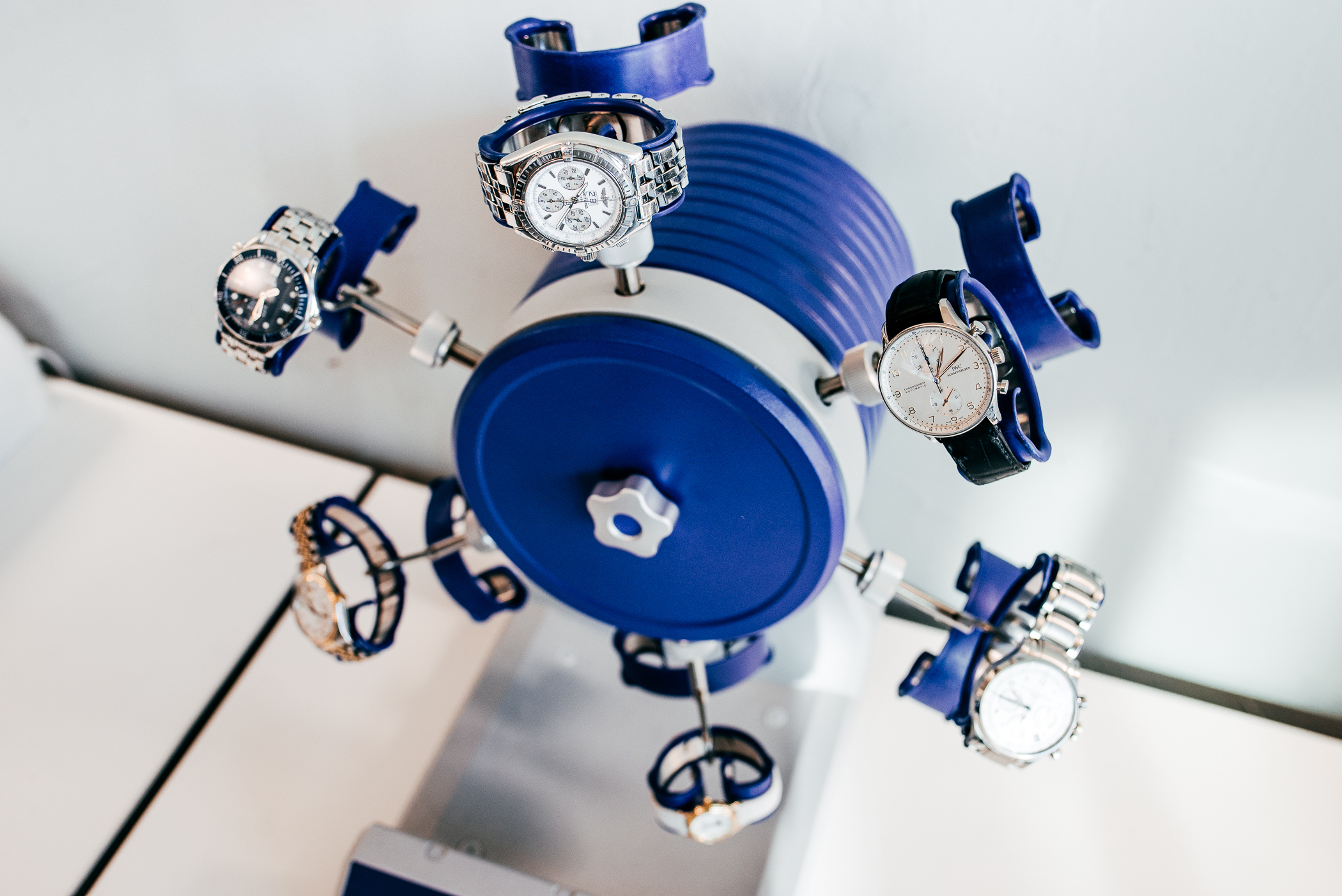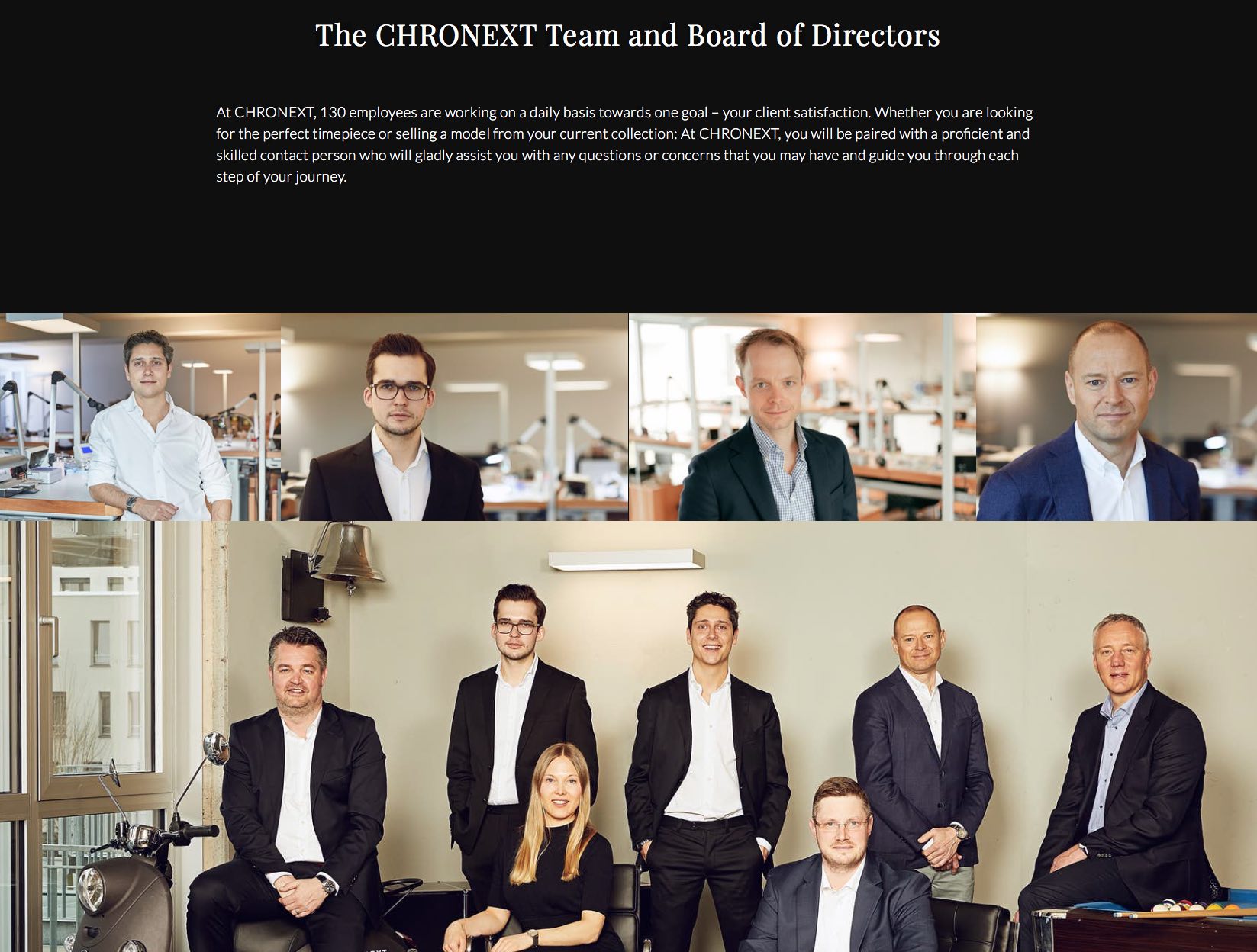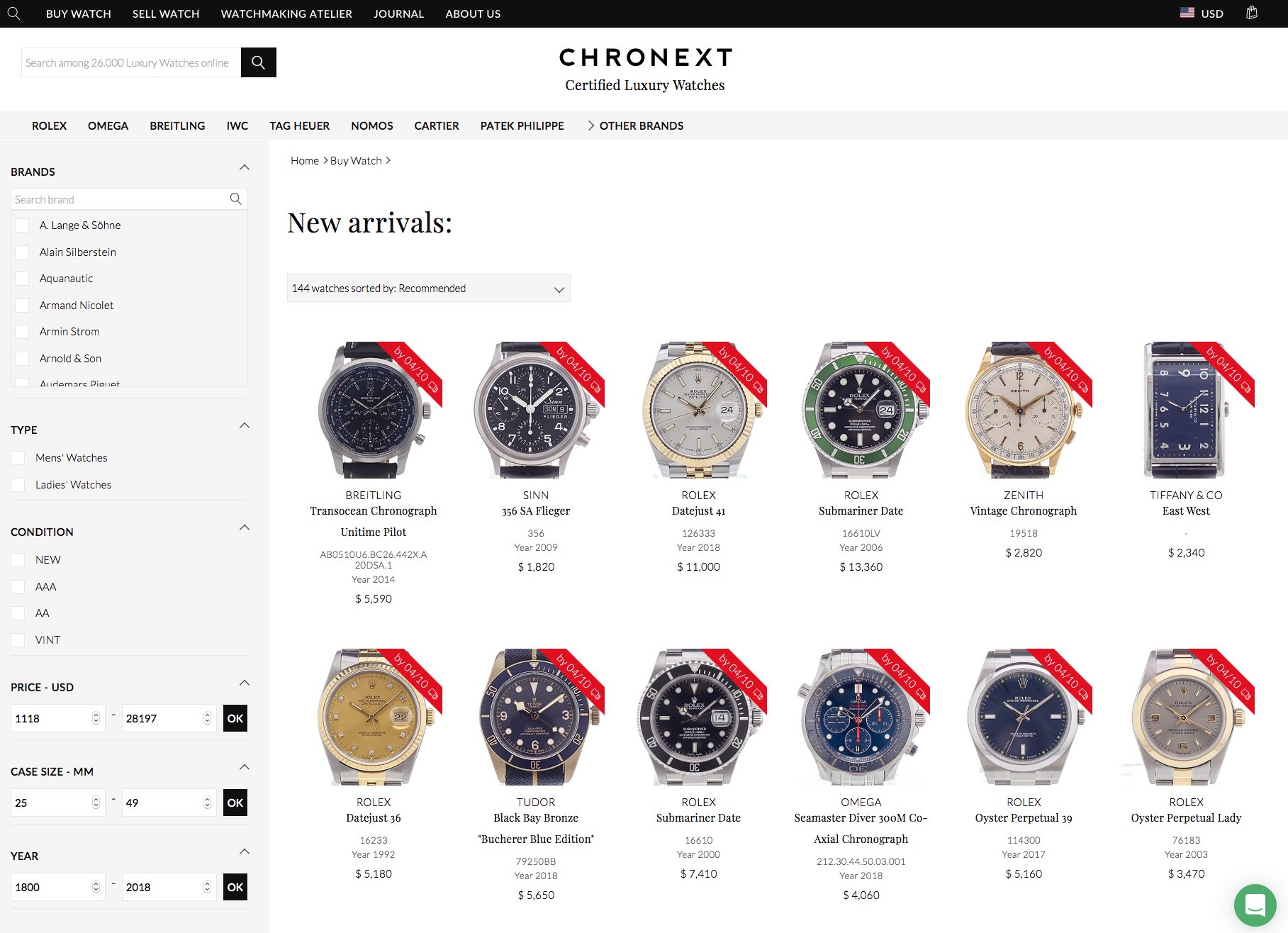The Online Watch Market – Philipp Man from Chronext
Deciphering the world of online watch marketplaces.

Today marks the fifth instalment in our series of interviews focusing on deciphering the world of online watch marketplaces. Today, we look at Chronext and talk to someone we’ve know for some years already, CEO Philipp Man (who was featured in our “Collector’s Series” here). As he likes to say, “the new luxury buyer is online” confirming how important this specific angle of the market is. What makes Chronext different? Own stock, verified watches, authenticity guaranteed, security in buying watches online… all explained in the following interview.
Can you give us a quick history of Chronext?
My co-founder Ludwig Wurlitzer and I developed our business idea during our university studies and founded CHRONEXT directly afterwards, in February 2013. We were both 22 years old. We now employ around 130 people and ship luxury watches to 130 countries. Our platform lists 31,000 watches from renowned retailers and brands directly including new, pre-owned and vintage pieces. Every CHRONEXT watch undergoes an inspection for authenticity and quality in our in-house master workshop before it is sold.
But we are not just an online retailer: with our headquarters in Zug (Switzerland) and further locations in London, Cologne, Munich, Hamburg and Frankfurt, we are positioned as an international omnichannel retailer. In January 2018, we announced our last financing round of over US 34 million. The total capital raised since we started CHRONEXT has been US 52 million.
What brought you to Chronext?
Ludwig and I were obsessed with the notion of making watches tradable like stocks. We initially wanted to create a stock-exchange type marketplace for university books, but as watch geeks, we realised watches were more suitable. Hence the name CHRONEXT – which stands for CHRON (time) and EXT (exchange trading). This was all done in a small kitchen in our shared flat whilst studying Business Management. We were already enthusiastic about mechanical, and as watch geeks, we simply had to build a stock market for watches as we know CHRONEXT today.
Who is behind Chronext? (investors and management team)
Management Team:
- Philipp Man: Chief Executive Officer
- Ludwig Wurlitzer: Chief Product Officer
- Bastian Stöhr: Chief Financial Officer
- Ian Tansley: Vice Chairman
Investors: Endeit Capital, Tengelmann Ventures, Partech Ventures, NRW.Bank, JamJar Investments, Capnamic Ventures, Octopus Investments and Inventure Partners.
What is your business model?
70% of the CHRONEXT model is similar to Farfetch (an online luxury fashion retail platform). We help retailers in 41 countries market over 26,000 watches and sell their watches online, without having to build the infrastructure. We take care of the pre-sale, after-sale service, logistics, payment and authentication. At the same time, 30% of our business is buying watches directly from end customers or letting them consign through us. We make it simple to sell your watch, by taking care of all aspects of the transaction including photography, shipping and the full sales process. We certify authenticity and condition as well as providing a warranty. We see ourselves as a trading platform that manages the distribution of luxury watches globally for brands, retailers and consumers.
What differentiates Chronext? What do you bring to your clients?
Most shops only sell watches, but do not own the entire quality assurance process. Every watch that gets a new owner at CHRONEXT (whether new, pre-owned or vintage) is inspected by our eleven master watchmakers and, if necessary, disassembled in up to 380 parts in our in-house atelier. This means: checked for authenticity, serviced and repaired. For the buyer, there is a 24-month warranty and a certificate of authenticity.
https://youtu.be/gNegrmgquV4
We help both sellers and buyers transact luxury watches in the most relaxed way possible. This means that besides the physical quality assurance process, every single watch is also bought from CHRONEXT not via CHRONEXT. What I mean by this is that the contract of purchase is always with us so that legally we are the counterparty for all issues, also in case of warranty cases or any other concerns. This structure allows us to truly ensure that quality is 100% flawless and with over 30,000 watches sold to date, we have never sold a counterfeit.
What are your key challenges?
When we started over five years ago, nobody knew us. Creating brand awareness with real trust is the hardest part of the equation. The only way to truly create a strong brand is a distinct company culture, and ultimately this is a function of our team. While technology is at the core of what we do at CHRONEXT, it’s our people that make us great – so the biggest challenge is hiring the right people.
The watch industry is slowly opening up to online trading. The first 14 manufacturers have entered into cooperations with us, including brands like NOMOS Glashütte. We are brand partners and offer their entire current range as an authorised retailer – something we want to develop even further.
What are your plans for the next three years?
To make CHRONEXT the global platform we envision, we need to enter new markets. Currently, our focus is still in the EU, but we are starting to enter Asia with an initial focus on Hong Kong and Singapore, as well as the US. We want to ensure that we are the trusted partners for all buying and selling of watches online, also in those geographies. This means we are currently establishing watch workshops on the ground for authentication and local sales staff. I think you will read many interesting announcements in the next few months coming from us.
What are the key trends and perspectives for the watch market?
We can no longer look at online and offline separately: The new luxury buyer is online, well informed and makes his purchases on a mobile or desktop device as well as in-store.
We are also seeing increasing demand for vintage watches from 1930 to 1970. This trend is also reflected in our own sales figures. The trend towards models that look vintage can also be clearly seen in new timepieces. NOMOS Glashütte, Omega, Cartier, Tudor and Co. are leading the way and reinventing their icons.
How do you analyse the market?
The market is recovering from a cyclical crisis. We have a new segment of buyers that are digitally networked, that are informed about prices and who even buy luxury products on the move with their smartphone. This means that the goods that predominantly lie with offline retailers must be distributed online. The watch industry speaks a lot about millennials, but the truth is that with such a low online penetration, and so few digitally driven initiatives, it is unlikely that you will reach this target demographic. I think brands are starting to recognise this and are now thinking about how to tackle this potentially existential crisis. We want to help with this.
The potential of the secondary market is huge. Up until now, brands had not been doing a great deal about the secondary market but are beginning to want a piece of the action. How do you envision working with them?
Ultimately these are new waters for watch brands. When the potential is in the double-digit billions annually, how do you suddenly enter a new space you have previously ignored or even bad-mouthed in some cases? The truth is – brands are great at building beautiful watches. They are not usually accustomed to dealing with end consumers in the same way a retailer is. Of course, this is changing more and more, with the rise of the mono-brand boutiques, but fundamentally watch brands are product companies first, and distribution companies second.
The pre-owned market has always been there, the recent hype just emerged due to François Bennahmias comment on the importance of entering this market. I have no doubt that players like AP are serious about this, but I think that it’s a lot of complexity coming at them that can hardly be fully understood until the moment that you have to deal with it. That’s why I think brands need to find platform partners – such as CHRONEXT – to manage their pre-owned operations, in a look and feel that is brand-friendly and offers a great user experience for customers. There isn’t any other watch marketplace that has full control end to end control of the experience like we do – that’s why brands are increasingly partnering with us to run their pre-owned businesses.
What is your main advice for collectors?
Never ever buy something you don’t love – even if everyone tells you it will go up in price. Only buy watches you truly love. I don’t believe in classic investment criteria, like “a watch needs papers”. In fact, I always buy my watches with no papers if their authenticity is guaranteed via CHRONEXT. The price tends to be lower and, in any case, you don’t wear papers and a box on your wrist and you don’t read the papers every night before going to bed. So why pay for them?
What will be your next personal watch acquisition?
I just ordered a new NOMOS Zurich Weltzeit in blue on Sunday, and I am still trying to restrain myself from buying a new Omega Darkside of the Moon black-black – but I think it will be too late in terms of restraining myself by end of the month 🙂









1 response
I tried to buy a new watch from Chronext earlier this year and unfortunately never managed to complete the transaction because there was clearly a supply problem with that brand. They were still advertising that the watch was available on their website for new buyers during the many weeks I was waiting for my watch having paid up front. It was always going to arrive ‘next week’. The person dealing with my case and eventual refund was pleasant and professional but it was a disappointing first experience of their service.